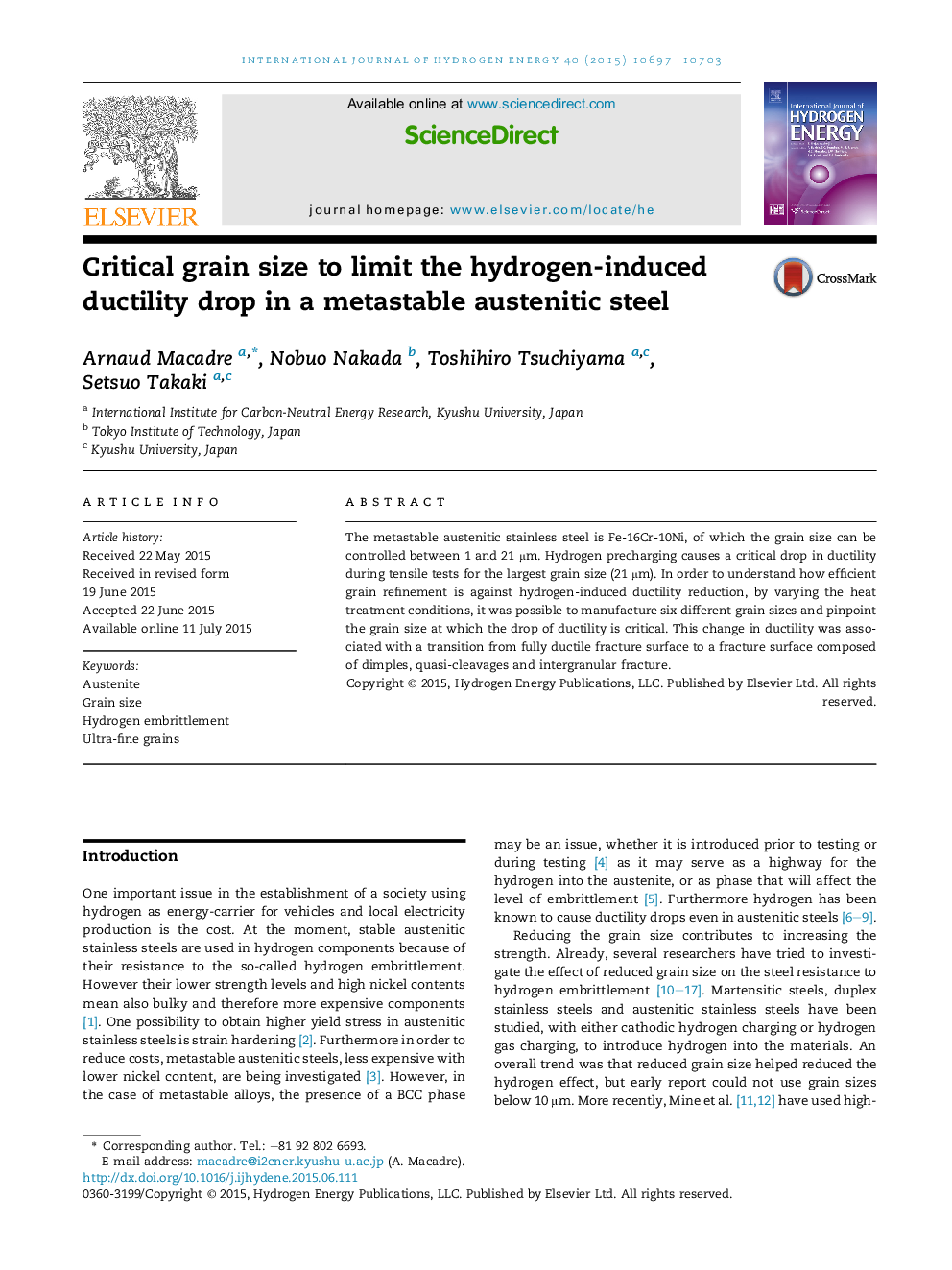| Article ID | Journal | Published Year | Pages | File Type |
|---|---|---|---|---|
| 1279120 | International Journal of Hydrogen Energy | 2015 | 7 Pages |
•Six grain sizes in an austenitic steel were investigated with and without hydrogen.•The ductility reduction caused by hydrogen was evaluated for each grain size.•Above 6 μm grains, the hydrogen effect is large, below 6 μm it is decreased.•Larger grains show clear signs of embrittled fracture, smaller grains do not.•The difference comes from strain being uniformly distributed or concentrated.
The metastable austenitic stainless steel is Fe-16Cr-10Ni, of which the grain size can be controlled between 1 and 21 μm. Hydrogen precharging causes a critical drop in ductility during tensile tests for the largest grain size (21 μm). In order to understand how efficient grain refinement is against hydrogen-induced ductility reduction, by varying the heat treatment conditions, it was possible to manufacture six different grain sizes and pinpoint the grain size at which the drop of ductility is critical. This change in ductility was associated with a transition from fully ductile fracture surface to a fracture surface composed of dimples, quasi-cleavages and intergranular fracture.
